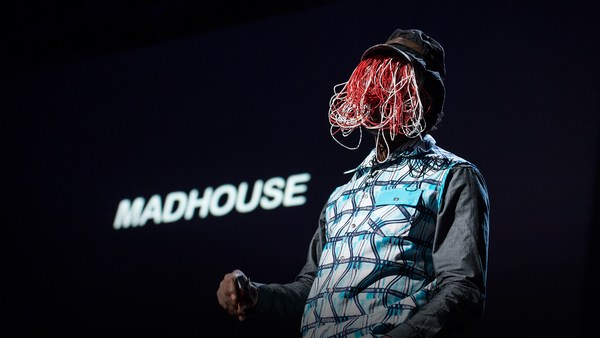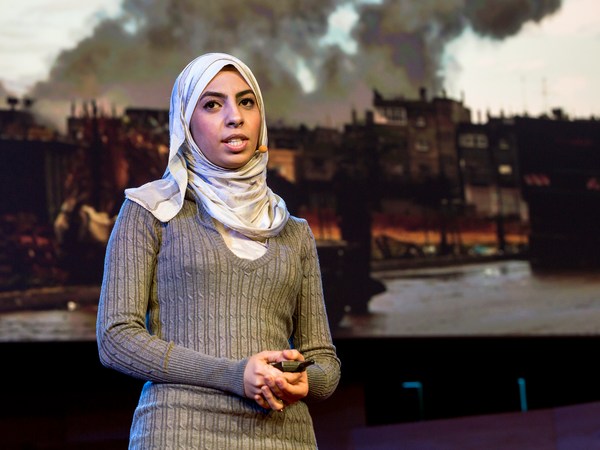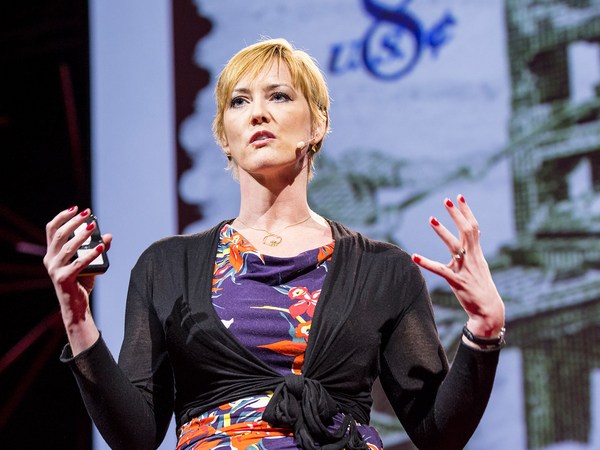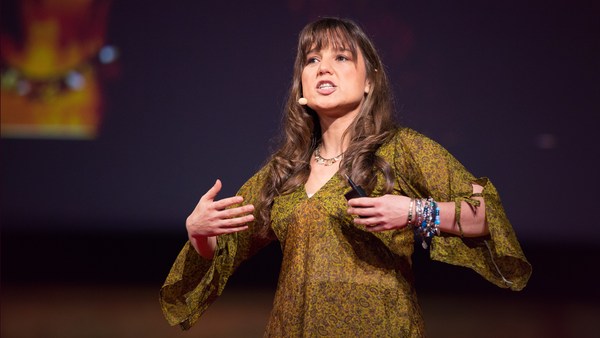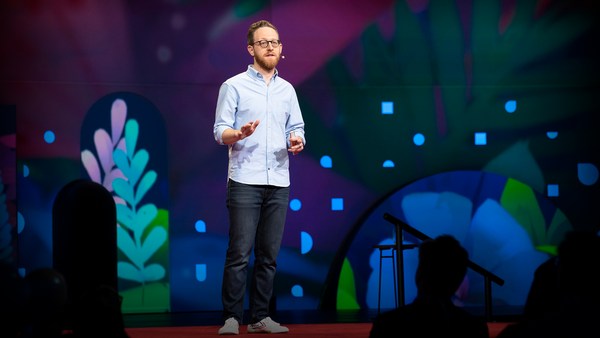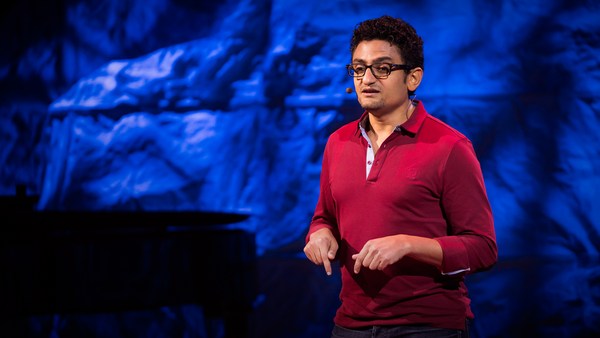Has anyone among you ever been exposed to tear gas? Tear gas? Anyone? I'm sorry to hear that, so you might know that it's a very toxic substance, but you might not know that it's a very simple molecule with an unpronouncable name: it's called chlorobenzalmalononitrile. I made it. It's decades old, but it's becoming very trendy among police forces around the planet lately, it seems, and according to my experience as a non-voluntary breather of it, tear gas has two main but quite opposite effects. One, it can really burn your eyes, and two, it can also help you to open them.
Tear gas definitely helped to open mine to something that I want to share with you this afternoon: that livestreaming the power of independent broadcasts through the web can be a game-changer in journalism, in activism, and as I see it, in the political discourse as well.
That idea started to dawn on me in early 2011 when I was covering a protest in São Paulo. It was the marijuana march, a gathering of people asking for the legalization of cannabis. When that group started to move, the riot police came from the back with rubber bullets, bombs, and then the gas. But to make a long story short, I had entered that protest as the editor-in-chief of a well-established printed magazine where I'd worked for 11 years, and thanks to this unsolicited effects of tear gas, I left it as a journalist that was now committed to new ways of sharing the raw experience of what it's like to be there, actually.
So in the following week, I was back in the streets, but that time, I wasn't a member of any media outlet anymore. I was there as an independent livestreamer, and all I had with me was basically borrowed equipment. I had a very simple camera and a backpack with 3G modems. And I had this weblink that could be shared through social media, could be put in any website, and that time, the protest went along fine. There was no violence. There was no action scenes. But there was something really exciting, because I could see at a distance the TV channels covering it, and they had these big vans and the teams and the cameras, and I was basically doing the same thing and all I had was a backpack. And that was really exciting to a journalist, but the most interesting part was when I got back home, actually, because I learned that I had been watched by more than 90,000 people, and I got hundreds of emails and messages of people asking me, basically, how did I do it, how it was possible to do such a thing.
And I learned something else, that that was actually the first time that somebody had ever done a livestreaming in a street protest in the country. And that really shocked me, because I was no geek, I was no technology guy, and all the equipment needed was already there, was easily available. And I realized that we had a frontier here, a very important one, that it was just a matter of changing the perspective, and the web could be actually used, already used, as a colossal and uncontrollable and highly anarchical TV channel, TV network, and anyone with very basic skills and very basic equipment, even someone like me who had this little stuttering issue, so if it happens, bear with me please, even someone like me could become a broadcaster. And that sounded revolutionary in my mind.
So for the next couple of years, I started to experiment with livestreaming in different ways, not only in the streets but mostly in studios and in homes, until the beginning of 2013, last year, when I became the cofounder of a group called Mídia NINJA. NINJA is an acronym that stands for Narrativas Independentes Jornalismo e Ação, or in English, independent narratives, journalism, and action. It was a media group that had little media plan. We didn't have any financial structure. We were not planning to make money out of this, which was wise, because you shouldn't try to make money out of journalism now. But we had a very solid and clear conviction, that we knew that the hyperconnected environment of social media could maybe allow us to consolidate a network of experimental journalists throughout the country. So we launched a Facebook page first, and then a manifesto, and started to cover the streets in a very simple way.
But then something happened, something that wasn't predicted, that no one could have anticipated. Street protests started to erupt in São Paulo. They began as very local and specific. They were against the bus fare hike that had just happened in the city. This is a bus. It's written there, "Theft." But those kind of manifestations started to grow, and they kept happening. So the police violence against them started to grow as well. But there was another conflict, the one I believe that's more important here to make my point that it was a narrative conflict. There was this mainstream media version of the facts that anyone who was on the streets could easily challenge if they presented their own vision of what was actually happening there. And it was this clash of visions, this clash of narratives, that I think turned those protests into a long period in the country of political reckoning where hundreds of thousands of people, probably more than a million people took to the streets in the whole country.
But it wasn't about the bus fare hike anymore. It was about everything. The people's demands, their expectations, the reasons why they were on the streets could be as diverse as they could be contradictory in many cases. If you could read it, you would understand me. But it was in this environment of political catharsis that the country was going through that it had to do with politics, indeed, but it had to do also with a new way of organizing, through a new way of communicating. It was in that environment that Mídia NINJA emerged from almost anonymity to become a national phenomenon, because we did have the right equipment. We are not using big cameras. We are using basically this. We are using smartphones. And that, actually, allowed us to become invisible in the middle of the protests, but it allowed us to do something else: to show what it was like to be in the protests, to present to people at home a subjective perspective.
But there was something that is more important, I think, than the equipment. It was our mindset, because we are not behaving as a media outlet. We are not competing for news. We are trying to encourage people, to invite people, and to actually teach people how to do this, how they also could become broadcasters. And that was crucial to turn Mídia NINJA from a small group of people, and in a matter of weeks, we multiplied and we grew exponentially throughout the country. So in a matter of a week or two, as the protests kept happening, we were hundreds of young people connected in this network throughout the country. We were covering more than 50 cities at the same time. That's something that no TV channel could ever do. That was responsible for turning us suddenly, actually, into kind of the mainstream media of social media. So we had a couple of thousands of followers on our Facebook page, and soon we had a quarter of a million followers. Our posts and our videos were being seen by more than 11 million timelines a week. It was way more than any newspaper or any magazine could ever do.
And that turned Mídia NINJA into something else, more than a media outlet, than a media project. It became almost like a public service to the citizen, to the protester, to the activist, because they had a very simple and efficient and peaceful tool to confront both police and media authority. Many of our images started to be used in regular TV channels. Our livestreams started to be broadcast even in regular televisions when things got really rough. Some our images were responsible to take some people out of jail, people who were being arrested unfairly under false accusations, and we could prove them innocent. And that also turned Mídia NINJA very soon to be seen as almost an enemy of cops, unfortunately, and we started to be severely beaten, and eventually arrested on the streets. It happened in many cases. But that was also useful, because we were still at the web, so that helped to trigger an important debate in the country on the role of the media itself and the state of the freedom of the press in the country.
So Mídia NINJA now evolved and finally consolidated itself in what we hoped it would become: a national network of hundreds of young people, self-organizing themselves locally to cover social, human rights issues, and expressing themselves not only politically but journalistically.
What I started to do in the beginning of this year, as Mídia NINJA is already a self-organizing network, I'm dedicating myself to another project. It's called Fluxo, which is Portuguese for "stream." It's a journalism studio in São Paulo downtown, where I used livestream to experiment with what I call post-television formats. But I'm also trying to come up with ways to finance independent journalism through a direct relationship with an audience, with an active audience, because now I really want to try to make a living out of my tear gas resolution back then.
But there's something more significant here, something that I believe is more important and more crucial than my personal example. I said that livestream could turn the web into a colossal TV network, but I believe it does something else, because after watching people using it, not only to cover things but to express, to organize themselves politically, I believe livestream can turn cyberspace into a global political arena where everyone might have a voice, a proper voice, because livestream takes the monopoly of the broadcast political discourse, of the verbal aspect of the political dialogue out of the mouths of just politicians and political pundits alone, and it empowers the citizen through this direct and non-mediated power of exchanging experiences and dialogue, empowers them to question and to influence authorities in ways in which we are about to see.
And I believe it does something else that might be even more important, that the simplicity of the technology can merge objectivity and subjectivity in a very political way, as I see it, because it really helps the audience, the citizen, to see the world through somebody else's eye, so it helps the citizen to put him- or herself in other people's place. And that idea, I think, should be the intention, should be the goal of any good journalism, any good activism, but most of all, any good politics.
Thank you very much. It was an honor.
(Applause)
